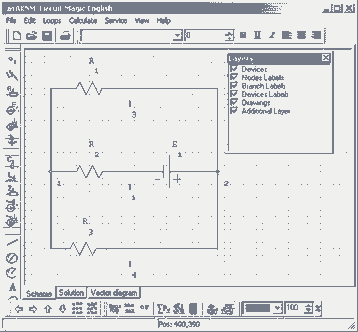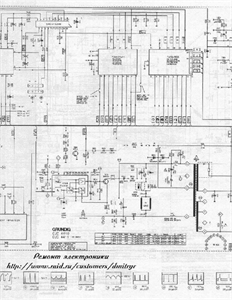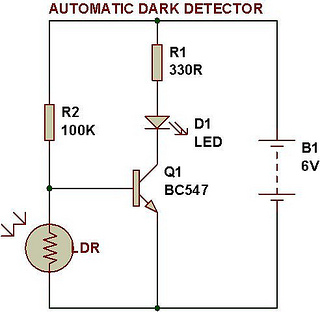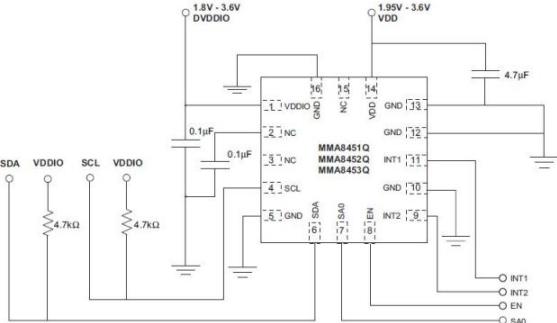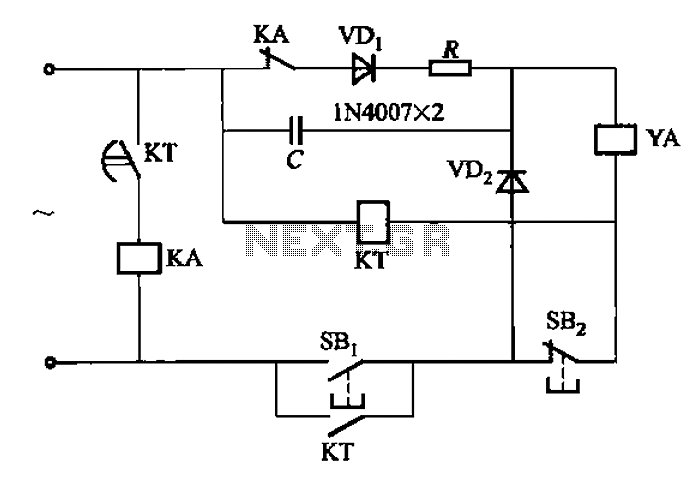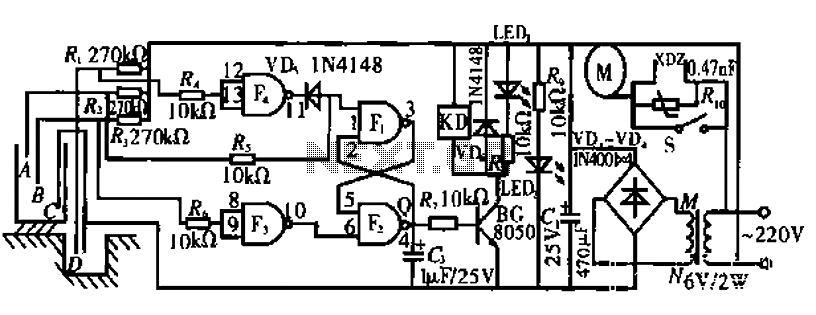
Basic Tilt Sensor Tutorial Circuit

The schematic for this project is designed to be very simple, utilizing a minimal number of components to keep costs and assembly time low. The primary components in the schematic include the PIC 18F452 microcontroller, a tilt sensor, and an LED bar. The power regulation circuit is located in the lower right corner, consisting of a battery, a 7805 voltage regulator, a capacitor, and a resistor with an LED indicator to show when power is on. The tilt sensor is connected to the PIC's input at PORTA's RA0 pin. When tilted, it pulls the pin high to +5V, and when not tilted, it functions like a button, connecting RA0 to ground. The LED bar contains 10 LEDs, but only 8 are connected, as PORTD has only 8 output pins available. While other ports could be utilized to light all 10 LEDs, 8 LEDs are deemed sufficient for the objectives of this project.
The circuit schematic is structured to facilitate a straightforward implementation of the described components. The PIC 18F452 microcontroller serves as the central control unit, managing inputs from the tilt sensor and controlling the LED output. The tilt sensor is a crucial component that detects orientation; its output is directly interfaced with the microcontroller's PORTA RA0 pin. This configuration allows the microcontroller to read the sensor's state, determining whether the device is tilted or upright.
The power regulation circuit ensures that the microcontroller and other components receive a stable +5V supply. The 7805 voltage regulator is essential for converting the battery voltage to the required level, while the capacitor stabilizes the output voltage, minimizing fluctuations that could affect circuit performance. The resistor and LED indicator provide a visual cue for power status, enhancing usability by confirming that the circuit is operational.
The LED bar, which features 10 individual LEDs, serves as an output display for the project. Although only 8 LEDs are connected to the microcontroller's PORTD, this configuration is sufficient to convey the necessary information to the user. Each LED can represent different states or levels of the tilt sensor's readings, providing a clear visual representation of the device's orientation.
Overall, the simplicity of the circuit design, combined with the effective use of the PIC 18F452, tilt sensor, and LED bar, makes this project an excellent example of efficient electronic design. The decision to limit the number of connected LEDs is a practical choice, balancing functionality with component availability and cost-effectiveness. This schematic effectively demonstrates the principles of microcontroller-based design and sensor integration in a user-friendly format.The schematic for this project has been kept super simple with very few parts keeping the total cost very low and assembly time low. The main parts in the schematic are the PIC 18F452, Tilt Sensor and LED Bar. The power regulation circuit is in the lower right corner. It consists of the battery, a 7805, a capacitor and a resistor+led power led circuit, which lets you know power is on. The tilt sensor circuit is connected to the PIC`s input at PORTA`s RA0. It is pulled high to +5v when tilted and when not tilted, it acts like a button that has been pushed, connecting RA0 to ground. The LED output bar actually has 10 LEDs, however only 8 are connected since PORTD only has 8 output pins.
You could use other ports to get all 10 LEDs lit up, but I felt 8 LEDs was enough to get the point across for this project. 🔗 External reference
The circuit schematic is structured to facilitate a straightforward implementation of the described components. The PIC 18F452 microcontroller serves as the central control unit, managing inputs from the tilt sensor and controlling the LED output. The tilt sensor is a crucial component that detects orientation; its output is directly interfaced with the microcontroller's PORTA RA0 pin. This configuration allows the microcontroller to read the sensor's state, determining whether the device is tilted or upright.
The power regulation circuit ensures that the microcontroller and other components receive a stable +5V supply. The 7805 voltage regulator is essential for converting the battery voltage to the required level, while the capacitor stabilizes the output voltage, minimizing fluctuations that could affect circuit performance. The resistor and LED indicator provide a visual cue for power status, enhancing usability by confirming that the circuit is operational.
The LED bar, which features 10 individual LEDs, serves as an output display for the project. Although only 8 LEDs are connected to the microcontroller's PORTD, this configuration is sufficient to convey the necessary information to the user. Each LED can represent different states or levels of the tilt sensor's readings, providing a clear visual representation of the device's orientation.
Overall, the simplicity of the circuit design, combined with the effective use of the PIC 18F452, tilt sensor, and LED bar, makes this project an excellent example of efficient electronic design. The decision to limit the number of connected LEDs is a practical choice, balancing functionality with component availability and cost-effectiveness. This schematic effectively demonstrates the principles of microcontroller-based design and sensor integration in a user-friendly format.The schematic for this project has been kept super simple with very few parts keeping the total cost very low and assembly time low. The main parts in the schematic are the PIC 18F452, Tilt Sensor and LED Bar. The power regulation circuit is in the lower right corner. It consists of the battery, a 7805, a capacitor and a resistor+led power led circuit, which lets you know power is on. The tilt sensor circuit is connected to the PIC`s input at PORTA`s RA0. It is pulled high to +5v when tilted and when not tilted, it acts like a button that has been pushed, connecting RA0 to ground. The LED output bar actually has 10 LEDs, however only 8 are connected since PORTD only has 8 output pins.
You could use other ports to get all 10 LEDs lit up, but I felt 8 LEDs was enough to get the point across for this project. 🔗 External reference
Warning: include(partials/cookie-banner.php): Failed to open stream: Permission denied in /var/www/html/nextgr/view-circuit.php on line 713
Warning: include(): Failed opening 'partials/cookie-banner.php' for inclusion (include_path='.:/usr/share/php') in /var/www/html/nextgr/view-circuit.php on line 713
